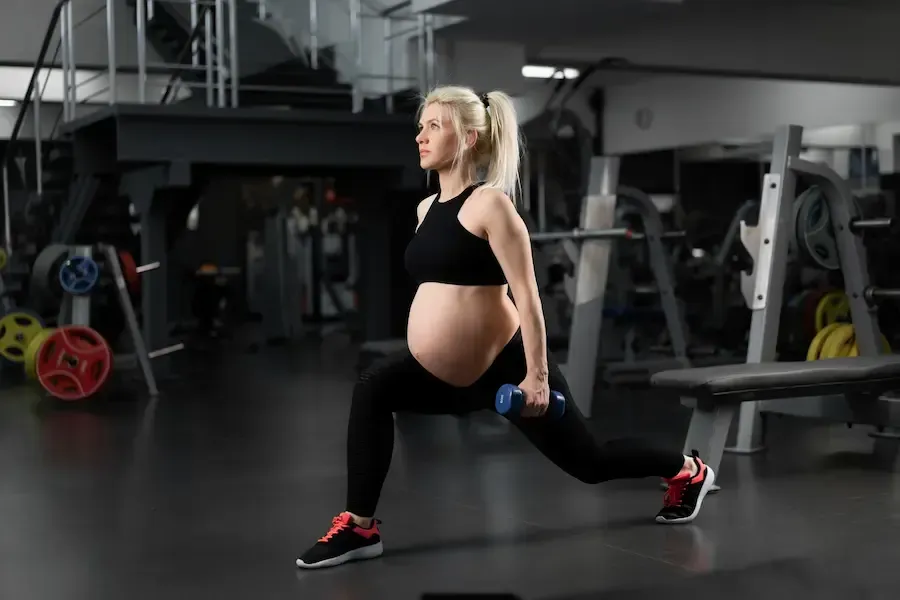Strength Training Principles and Guidelines: Part One
Almost any form of exercise will stimulate strength and muscle development. Unfortunately, misconceptions, myths, and misunderstandings plague the fitness industry, especially regarding strength training. There is a huge attrition rate among those starting a strength training program primarily because most people are not taught the principles essential for a safe and effective program.
This article is part one of a five-part series discussing the very important principles and guidelines of a safe and effective strength training program. Part one will explain the proper methods of warming up, stretching, and cooling down when strength training. Part two will discuss the importance of forcing blood and proper lifting speed to your muscles.
The following exercise guidelines are essential for your safety and the effectiveness of your strength training program.
Warming Up, Cooling Down, and Stretching
Warming up promotes safety, prevents injury, and increases performance. You should warm up in two ways to create blood flow throughout the body and thus prepare your muscles for the workout. First, before beginning your weightlifting session, do some form of cardiovascular exercise at a light, comfortable intensity for about five to ten minutes. Walking or riding a bicycle works well. When you've finished your warm-up, stretch the primary muscles you've been using. For example, stretch your quadriceps, hamstrings, calves, and hips if you warmed up on the bicycle.
Then, for the first exercise of each muscle group, do a warm-up set with very light weight for 12-20 repetitions. For example, if your first chest exercise is the bench press, do a warm-up set of very light weight and then continue with your selected chest routine. Once you have completed your chest workout and are ready to train the next muscle group, do a warm-up set; then continue training that muscle group, and so on.
Stretching improves physical performance, prevents debilitating injuries, and makes you look and feel better by improving your posture. When muscles are stretched, their elasticity improves, increasing your range of motion and improving the quality of your movements. Never stretch a cold muscle—always make sure your muscles are warm before stretching. When a muscle is properly warmed up, it can become elastic and relax more easily; warming up also circulates blood to nearby tissues and helps remove unwanted waste products from your system.
In addition to stretching the muscles involved in the cardiovascular exercise, you should spend time stretching each specific muscle you have trained in your weightlifting program. This won't take much more time, and the benefits are many. You have to rest between your strength training sets anyway, so you should use this time more productively--for stretching. Think about it: what better time to stretch than right after you have targeted blood to a specific muscle? After you have adequately warmed up each muscle group, stretch between sets. Each set requires a resting period--usually between 30 seconds and three minutes (depending on your goal). Use your resting time wisely and stretch the specific muscle being trained. Stretch only after the muscle has been adequately warmed up and about once every two to three sets per muscle group.
By the time you have finished training each muscle of the body, you will have incorporated stretching into your program, and at the best possible time, right after exercise, when the muscle is warm. This stretching between exercises is a valuable technique and will make a tremendous difference in your health.
The cool-down after strength training is also crucial. Blood tends to accumulate in the lower body whenever a vigorous exercise session is stopped abruptly. With reduced blood return, cardiac output decreases, and light-headedness may occur. Because muscle movement helps squeeze blood back to the heart, continuing some muscle activity after the last exercise is completed is essential. Easy cycling, walking, or any other low-intensity cardiovascular exercise is an appropriate cool-down activity, as is any other form of cardiovascular exercise. Cool down for about 5-10 minutes at light intensity, similar to your warm-up.
Please check back for Part Two, where I'll discuss the importance of forcing blood to your muscles, common mistakes that hinder the process, and proper lifting speed. Until then, always include a warm-up, stretching, and a cool-down for maximum effectiveness and to prevent injury. Good luck, and enjoy all the incredible benefits of strength training.










